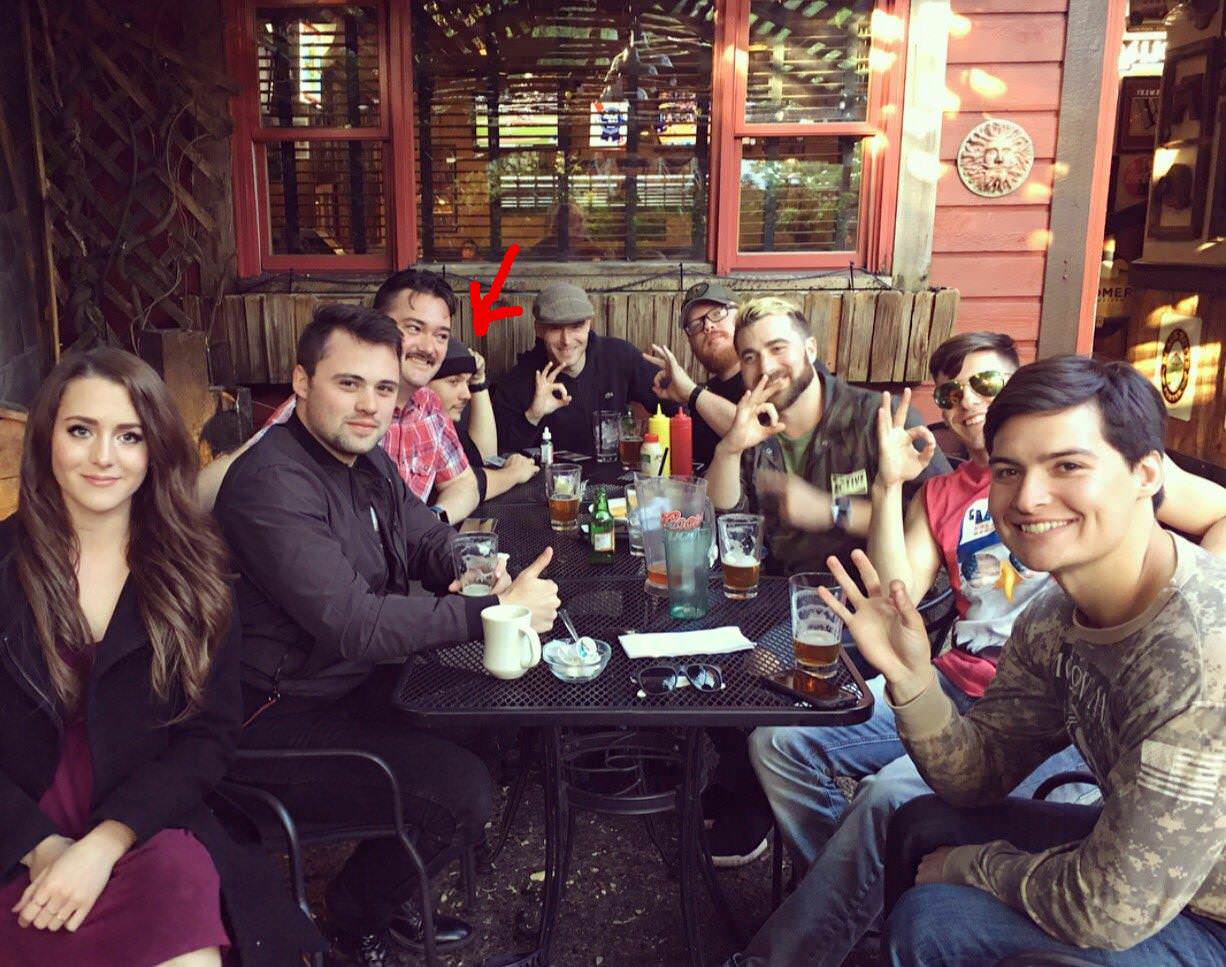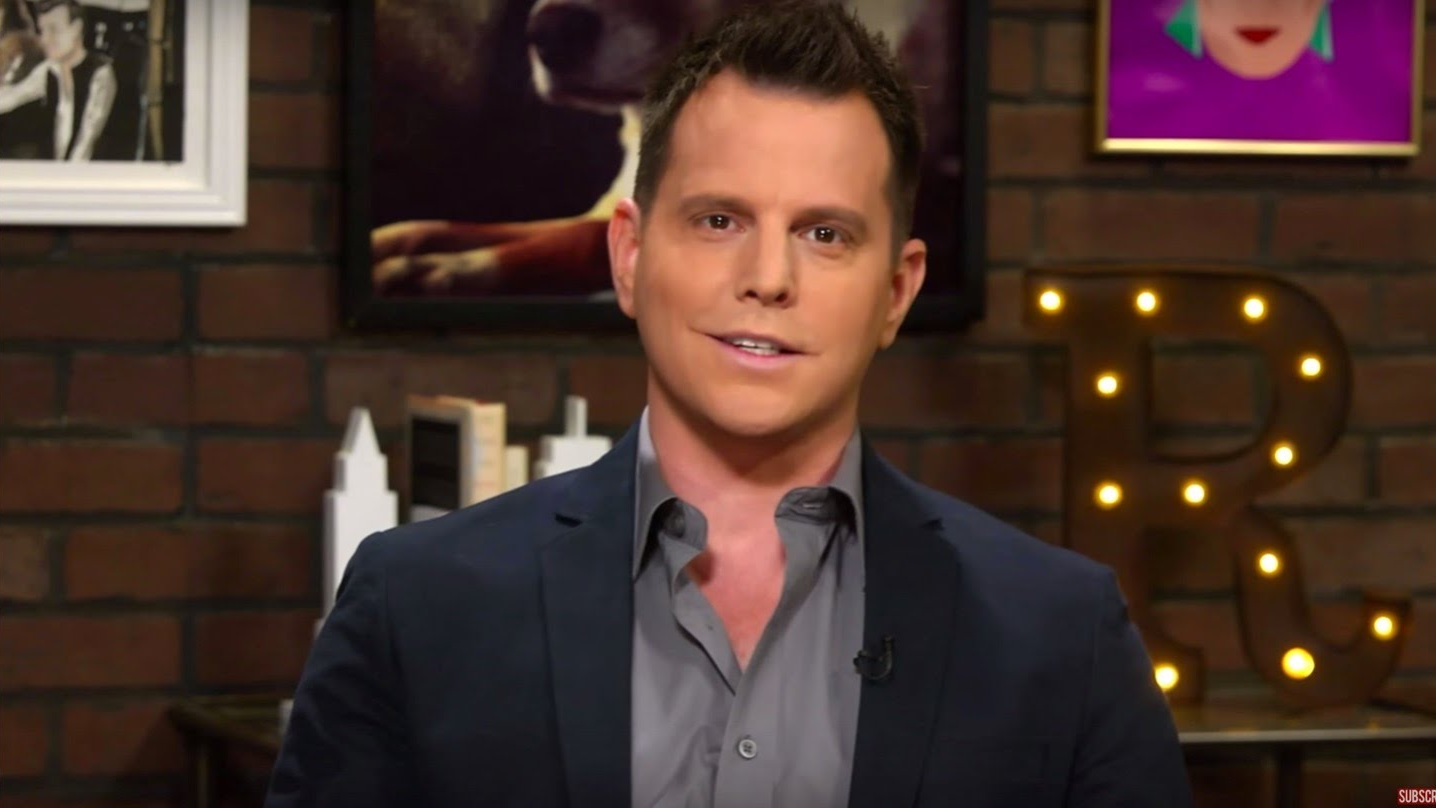
Pigs (A Million Different Ones)

Some years ago, the summer after college - and this was right at the start of the Great Recession, which may be relevant - I had a job working at a small airport, shuttling rental cars. It paid $10 an hour and was mostly outdoors - you’d pick up the cars in the drop-off garage, run them back to our garage, clean and vacuum the interior, run it through the carwash, then park them for the next customer. I liked it.
One of my co-workers was a guy my age. He was one of the friendlier guys, instinctively called me “Danny” in the way I’ve found New Englanders like to do. Wore a jean jacket, smoked, and seemed sensible and level-headed in the way quiet people often tend to seem. Basically, a nice, modest guy with whom I preferred processing the cars.
One morning, we were the first guys in our garage, and for some reason had no cars to pick up. We sat around in the auto bay - or leaned against the cinder-block wall actually, there was nothing to sit on - and just shot the shit.
“Danny,” he asked, “you heard about this Amero thing?”

I paused. I did actually have a passing familiarity with the Amero. I had always been interested, ever since I was a little kid, in cults and secret societies and conspiracy theories, raiding the books in my elementary school library. Was a suboceanic magnetic resonance to blame for the deadly Bermuda Triangle? Was the “Man in the Iron Mask” an illegitimate relative of the French royal family? Did the Anglin brothers escape Alcatraz?
What my co-worker was talking about was not a vestige of some warm childhood memory, though. He went on, describing the videos he had seen, explaining that the Amero would replace the dollar once the North American Union was complete, uniting the US, Canada, and Mexico in a new superstate. He asked me about the superhighway being built to connect Canada directly to Mexico - had I heard anything about that?
Now here was a person who, if you’d asked me to look around the garage and point out who I thought was smartest, I’d have said, him. He was an obviously thoughtful guy from a working class background, who hadn’t had as many chances in life as I’d been given. He was curious about the world and what was going on in it, and wanted to talk about things he’d learned with someone else - a feeling I knew acutely at the time, too.
But what he was talking about was nuts, a far-right conspiracy theory circulated by the lunatics who claimed the United Nations was going to invade any day now, and that Obama was a secret Muslim born in Kenya. How did he not know that?
That was in 2009, but might as well have been a century ago. We’ve sunk much lower since then, and the strange phenomenon I witnessed that summer morning - of an apparently normal, intelligent person seduced by a far-right invention - is a mainstream occurrence now.
Indeed, America elected one of the worst proponents of “Birtherism” as President, his whole rancid retinue trailing after him into the corridors of power. There’s no redeeming Trump or any of his sidekicks; they all deserve to be tried at Nuremberg in a very faithful historical reenactment. What I do wonder about is the larger ecosystem that spawned Trump, belching him forth from the muck like Swamp Thing, and which will bubble and froth long after their icon is out of office and dead.
As my experience at the garage hinted, the internet is now the world’s largest subduction zone, where an endless column of young, mostly white males are overtaken and crushed by the unstoppable force of far-right extremism. Violent misogyny, Islamophobia, anti-Semitism, gay-bashing, anti-black racism - you name it, you can find it, in ever more plentiful amounts online.

The biggest tech platforms you can name - Facebook, Google, YouTube, Twitter, Reddit - serve up this kind of poison on an industrial scale, mushrooming and expanding at a rate that makes catching up with the spread almost impossible. The early neo-Nazi webforum Stormfront is on life support, largely because there is no need for the far-right to stay in an online cul-de-sac; they have free run of the world now. Worst of all, those consuming this economy of hate, which has exploded into an epidemic over the past ten years, are still mostly boys.
Meaning, we as a society are going to be living with the effects of this radicalization for the rest of our lives.
When I was in college, in the late 2000s, the extremist scholarship I read was almost entirely obsessed with Islamism. The big debate at the time was between a staid Georgetown professor named Bruce Hoffman, and a somewhat colorful psychiatrist and ex-CIA officer named Marc Sageman. Hoffman excoriated Sageman’s book, “Leaderless Jihad,” for the crime of positing that the future of Islamic extremism would be in your own neighborhood, as young men were radicalized online and launched violent action with, at most, a few like-minded friends found in their community.
No, Hoffman said, defending the ruinous, pointless occupation of Afghanistan; the threat was coming from some reconstituted Al Qaeda, hiding just beyond the border in Pakistan, and Sageman had fundamentally misread the tea leaves.
What we now know is that Hoffman, and the phalanx of military-industrial complex gnats who buzzed to his defense, were entirely, one-hundred percent wrong. Sageman was a prescient observer; from the Pulse Nightclub massacre, to the Fort Hood shooting, to the Boston Marathon bombing, those violent attacks with an apparent jihadist bent were launched by lone wolves radicalized online.
Not a single successful terror attack on America was planned and executed by anything approaching the sort of foreign network behind 9/11, since 9/11. Not one. Osama Bin Laden was not an evil genius in his underground fortress, but a doddering old man confined to a crummy little house by a military junta. None of these attacks were planned and ordered from tribal areas of Pakistan; they happened next door to you.
If Sageman, in his wisdom, missed anything at all, it was simply in focusing on Islamic extremism as the flashpoint. As any honest person in America today knows, it is white power, far-right extremism that rules as king amongst violent homegrown ideologies. It has always had pride of place in the pantheon of American horrors, and probably always will.
I’d like to think we were making progress. But a relatively minor incident this week reminded me that the high-tech innovations usually equated with progress in the American imagination are better-suited to reaction. Instead, like razor-sharp boomerangs, the glories of Silicon Valley have turned in mid-air and shot backwards, slicing through us and hurtling into a dark past.
I reaped a whirlwind of shit last week for calling someone a Nazi propagandist. I base that statement on the evidence that what Tim Pool, 33, does, all day every day, is hang out with Nazis under the guise of being a guerilla journalist. Pool is not a Nazi himself - no, never, not Tim - he’s a liberal. Specifically, the type of liberal who shares all of the grievances of the far-right in his videos, pimping for their pet hates, emblazoned as they are with the talking points and gripes of the far-right. Tim, who says he supports universal healthcare and Bernie Sanders, is the type of liberal who depicts the far-right in a positive to heroic light, while blasting the enemies and oppressors of the far-right as villains.
Here’s Tim slouching in the corner, clearly unhappy for some reason to be caught in a photograph having beers with neo-Nazis James Allsup, Antonio Foreman, and Brittany Pettibone, as well as possibly the stupidest figure in the far-right today, Tim “Baked Alaska” Gionet.

You’ve probably met liberals like Tim Pool before - you know, the type of circulate insane conspiracies about Muslims seizing control of whole swathes of Sweden, instituting no-go zones in which Sharia law reigns supreme, beyond the control of those poor industrious (white, hint hint) Scandinavians. Take a look at Pool’s very, very liberal-sounding YouTube page, with its daily posting of highly liberal videos.

Perhaps you’ve seen Pool’s pal, Dave Rubin, a hack stand-up comedian and “classical liberal” who now hosts an internet talk show, poisoning young minds strung out on the YouTube algorithm. The good news about Rubin is, he looks precisely as dumb as he actually, in point of fact, is. Like a dog listening to classical music.

Anyway, Rubin sicced his followers on me a couple times, cackling at the idea either he or Pool in any way resembled a Nazi. Pool and Rubin got together a day or so after my nasty encounter with the two of them, which was in turn prompted by Pool’s appearance on Joe Rogan’s podcast - alongside Jack Dorsey, the CEO of Twitter.

What was Dorsey doing with these scumbags? Each of them - with Rogan in pride of place - has monetized providing an entry point for far-right extremists to slink into the mainstream. Their followers make Twitter a snakepit of harassment and radicalization, yet they whine endlessly about any consequences for their actions. It was of great satisfaction to Rubin and Pool a day later to cackle over their humiliation of Dorsey, a high-status dunce who inexplicably allowed himself to be used in this manner. In between their gripes, the two took time to crow over their success grifting rubes out of their money, and how much the YouTube algorithm had benefited them.
Rogan, Pool, and Rubin are each, in their own way, more contemptible than the constellation of far-right lunatics who’ve shone so brightly under Trump. At least such creatures as “The Crying Nazi” or “The Dapper White Nationalist” have carved the swastika into their own foreheads, marking them for life as the monsters they are; they have also had the consequences of their crimes catch up to them much faster. This other crop of fascists - fascist fellow travelers, let’s say - play a much trickier PR game: they themselves are honest brokers, just asking questions of their guests. Like execrable Twitter shithead Michael Tracey, it means nothing that their limited success is entirely dependent on reactionaries eager to have a “liberal” or “moderate” voice co-signing their noxious bullshit.
The modern economy of influencer marketing recognizes that the old ways of advertising do not work in reaching younger people. That’s why makeup companies provide inducements for popular Instagram users to recommend and promote their products, or why VICE was so successful in extracting investment from legacy media companies desperate to reach millenials. In the logic of this economy, affinities are based on the perceived authenticity of the speaker.
Perhaps that’s no great shakes if the stakes in question are whether or not a bronzer is perceived as something worth buying. But when the intimacy cultivated by these new internet icons with their adherents is weaponized toward far-right radicalization, the results will be fatal. As put in a 2018 report by the Data & Society Research Institute, it is these “polished, well-lit microcelebrities” and the “captivating videos” they produce that lead viewers into the abyss:
“Content creators in the [Alternative Influence Network] claim to provide an alternative media source for news and political commentary. They function as political influencers who adopt the techniques of brand influencers to build audiences and “sell” them on far-right ideology...Online celebrities can often convey deceptively subversive and powerful messages. Indeed, one reason YouTube is so effective for circulating political ideas is because it is often ignored or underestimated in discourse on the rise of disinformation and far-right movements. Yet at the same time, the members of the AIN are experiencing great success…”
It is not the gathering of evidence, aided by an ability to discern what is or is not a trustworthy source, that will drive the making of opinions. If that was ever the case, it is disappearing, and fast. Plugged into a technological ecosystem where it is possible to infinitely circle the drain, never hearing a word contrary to those of the charlatans, quacks, and bigots promoted therein, radicalization is not some byproduct; it is the product.
The results were apparent, in every angry, harassing response I received, after Rubin waved the red flag at his herd: these people genuinely had no idea they were espousing far-right ideology. They had never been told before that their obsession with racist conspiracy theories, “cultural Marxism,” or “radical” feminism were the makings of a Nazi culture. They were genuinely baffled and enraged by something I felt was so obviously evident. With their superiority of intellect, available to only those enlightened in the in-group, my statement that they were following a gang of clowns could only be taken as an attack, touching in the most personal way those emotions they had invested into their awakening.
Of course, that such far-right adherents lack much self-awareness is not going to matter. The Dunning-Kruger effect, under which the clueless believe themselves more knowledgeable than anyone protesting their ignorance, may explain the phenomenon. But knowing this will do nothing to prevent the passage of men like Robert Bowers, who massacred eleven elderly Jews at the Tree of Life Synagogue in Pittsburgh, from middle-class dittohead anonymity into the depravity of white nationalist terror.
Consider this report on Bowers:
“Accounts from Mr. Bowers’ coworkers of two decades ago, and an analysis of his social media posts in the weeks prior to the massacre, suggest that staunch conservatism metastasized into white nationalism. First fascinated with conservative radio host Jim Quinn, he later became a follower of aggressive online provocateurs of the right wing’s fringe.
According to experts who study extremism, the Internet and social media have created new pathways from strident ideology to radicalism. Efforts to address that by shutting down social media sites can backfire, some experts said, calling for a subtler, but comprehensive approach.
‘For the last several years, analysts have warned that these kinds of conditions would lead to these kinds of actions," said John Horgan, a professor at Georgia State University's Global Studies Institute and author of The Psychology of Terrorism, published in 2014. "I genuinely fear that we are seeing the culmination of something that has been boiling over for some time now. ... And I fear that we’re not prepared for it.’”
The Left’s worst instincts trend toward annoyance; the Right’s get people killed, and with some frequency. Our all-American Nazis are lethal in a way the modern Left simply is not - thus the need for such fascists to exaggerate or invent left-wing violence incessantly, whether from the courageous (yes, courageous) Antifa movement, or, for those who prefer racial incitement, from the Muslim Brotherhood or Black Lives Matter or anti-deportation activists.
Don’t even bother to pretend otherwise; it is the truth. Per an Anti-Defamation League report, in 2018, “every single extremist killing — from Pittsburgh to Parkland — had a link to right-wing extremism,” in a year which “saw the highest percentage (98%) of right-wing extremist-related killings since 2012, the last year when all documented killings were by right-wing extremists.”
I am not too worried about economic justice being someday exacted upon those like Dave Rubin and Tim Pool. I’ll go further - they will face the consequences of their actions, and suffer the flame-out that has put so many of their less-sophisticated comrades in the poorhouse. I have no doubt about this. Rubin’s fretting over my call for his host websites to dump him speaks to his greatest fear: demonetization, deplatforming, and an overnight plunge back into obscurity, ala Milo and Alex Jones. The greater problem will be a structural one, bigger than the fate of any individual sleazemonger.
It is necessary to expose what the far-right and their sycophants actually believe as they amplify their message across this new network of communication. Exposing how they really think and talk has been the mission of a very noble band of activists and educators, as seen in the recent demolition of the white power hate group Identity Evropa. Educating those susceptible to their messaging as to why such entities are so wrong will be a harder struggle, given the sheer scale Big Tech offers. It will not be easy to do so without meaningful action by the tech industry, which only now seems to be somewhat recognizing that they have become to America today what sidewalk display cases were to Nazi Germany.
As with the Aryan Nations in the ‘90s - bankrupted by the Southern Poverty Law Center via legal action - the most successful mechanism for ensuring the work of antifascist activists results in permanent dislocation of the far-right is via financial pressure. Deprived of any safe haven from which they can make money, such figureheads for the movement will fade away, back into obscurity. Milpool isn’t a heroic guerilla journalist; he’s just another freelancer who had enough of a dearth of scruples to hitch his wagon to a Nazi star. Dave Rubin is so dumb, he is allegedly being conned by pranksters on a semi-regular basis about nonexistent YouTube censorship. Deprived of the oxygen currently offered by Big Tech and payment processors, the futures of Milo auctioning off his portraits and Richard Spencer having his credit card rejected will be theirs, too.
The truth is, they couldn’t have made it any other way; far-right pandering was the only way they were going to get ahead, because on merit alone, they were non-entities. And even without meaningful action by Big Tech to stop hosting these monsters, counter-programming is possible. YouTube vlogger Natalie Wynn’s “Contrapoints” series is not just remarkably produced, deploying lighting and design light-years beyond those of the alt-right, but lucidly explains just why it is that someone like Jordan Peterson is a poseur who’s totally full of shit.

What I like about Wynn is her deflation of such pied pipers is never delivered with any kind of self-righteousness or superiority, of the sort that might easily turn off potential converts. Wynn does not DESTROY her adversaries, as sawn-off little charlatans like Ben Shapiro presume to treat their enemies. Wynn’s videos feel instead empathetic, seeking to understand first why someone might be susceptible to far-right messaging, before providing a far more reliable set of facts to consider.
In this, I think Wynn’s approach is highly significant in charting a way forward. As highlighted by Oliver Thorn, another excellent, thoughtful YouTube personality, the far-right’s appeal is that of a “community of strength.” By joining, you too can become strong. By awakening your white consciousness, you are heir to the Roman Empire and the Vikings, not a sad unhappy loser. And for a time, it probably will bring a greater feeling of self-esteem; such radicalization wouldn’t be a problem if it didn’t deliver results, at least initially. Jordan Peterson’s admonition to make your bed is probably, y’know, decent advice for all the man children out there.
The problem for such adherents, as their beliefs grow more extreme, is that the path is ultimately unsatisfying because it is a gigantic lie. Adherents will never be truly fulfilled, because the gulf between what a far-right identity promises, and what it actually delivers, is too vast. You may feel a sense of camaraderie, marching with your tiki torch through Charlottesville, but your chanting - “You Will Not Replace Us” - gives the game away. The fear, insecurity and fragility coursing through every one of the Nazis who marched on that shameful day was apparent enough. The community of strength is a lie.

Which leads to shame. If the mismatch between fantasy and reality penetrates the Nazi’s occluded field of vision, they can only feel shame at not living up to whatever Aryan ideal they’re supposed to embody. And if, as psychiatrist James Gilligan writes, “All violence is an attempt to replace shame with self-esteem,” it is not hard to see how the ultimate destination for some of these men will be an attempt at redemption via carnage.
Charlottesville ended with a pudgy white supremacist driving a car into a crowd. Dylann Roof, “a child both of the white-supremacist Zeitgeist of the Internet and of his larger environment” in the Cotton Belt, came to see massacring old women in a historic black church as an act of self-defense. Robert Bowers made one final post on white supremacist social network Gab before massacring the synagogue, ending, “Screw the optics, I’m going in.”
The opportunists and hucksters who pave the neural pathways along which these future killers trudge can declaim responsibility all they want. As Natalie Wynn says, “After all, ‘I’m not a fascist’ is exactly what a fascist would say.” That Wynn advances such clear-minded thinking as a trans woman, with a campy sense of humor, makes her work doubly powerful. She has the facts, has the bad guys dead to rights, and is one of the subaltern people the far-right would claim as inferior or deranged.
This is significant. For in opposition to the “community of strength,” a Potemkin village in which no inhabitants will actually find happiness, there is the “community of vulnerability.” By sharing not in the illusory glory of white power, but in the admission of imperfection, loneliness, and sadness, fear and anxiety is confronted in a far healthier, direct way. And if I learn that such feelings of humanity might even be shared by those people I’d loathe and strike at to make myself feel superior - such as a trans leftist, or a black socialist - what does that make me? What is a master without a slave?
It makes sense that in individualist, self-centered, money-obsessed America, it would be the communities of strength that dominate. But consider, as social critic Morris Berman did, a fascinating exception to the national creed of self-reliance:
“American history can be seen as the story of a nation consistently choosing individual solutions over collective ones. One American who did dissent, however, was Bill Wilson, the founder of Alcoholics Anonymous. In Twelve Steps and Twelve Traditions he wrote: ‘The philosophy of self-sufficiency is not paying off. Plainly enough, it is a bone-crushing juggernaut whose final achievement is ruin.’”
Wilson is a fascinating and somewhat-overlooked American figure, whose ultimate conclusions about the wages of such individualism could hardly be said to have come without experience. As a former 1920s stockbroker, his alcoholic collapse eerily dovetailed with that of American capitalism and the Great Depression. To go on to the bitter end, in the manner that had made him rich and “successful” by American standards, would also have meant his death from addiction.

“With addicts as the ultimate individualists,” wrote critic Sam Leith in a magnificent review of Trainspotting prequel Skagboys, “and heroin as morally inverted Thatcherism,” is it any wonder most never recover? The shock to the system which instead saved Wilson, and what serves as the bedrock principle of Twelve Step groups, is the idea that by talking to someone else with the same problem, an addict can somehow avoid acting on their addiction. By fostering a community built around the admission of a shared vulnerability, even the worst cases of addiction can find remission, and beyond that, even happiness.
The tantalizing question of whether an ideology of hate in fact functions like an addictive substance, complete with binges, vows of cessation, and relapses, deserves an entire essay of its own. What we do know is that even the most hardcore adherents to such ideologies are not beyond hope, given countervailing evidence. Anti-racism activist Christian Picciolini’s memoir, Romantic Violence, is a stunning story recalling his teenage descent as into Chicago’s white power scene, and is clear in describing how one skinhead leader’s mentorship of him, a sad, lonely boy, fueled his attachment to the movement.

It is Picciolini’s growing shame upon opening a record store, catering to a friendly and diverse customer base who share his tastes in music, which gradually prompts a realization of his own weakness. And when he recognizes he is in fact weak - fearful, running away from the issues really troubling him - he is beginning to heal in a meaningful way. Derek Black, son of internet hate pioneer and Stormfront founder Don Black, experienced a similar awakening upon going to college:
“In 2010, he enrolled at New College of Florida, in Sarasota, where his dad was convinced he was on a reconnaissance mission, living, as a caller to their radio show put it, ‘among the enemy in a hotbed of multiculturalism.’ Instead, Derek made fast friends with Juan, a Peruvian immigrant, and Matthew, an Orthodox Jew, and he dated a Jewish woman named Rose, feeling ‘as if he were occupying two lives: breakfast at New College with Rose and one of her transgender friends and then Thanksgiving dinner with Don, Chloe’ — Derek’s mother — ‘and a few former skinheads in West Palm Beach.’”
I have no doubt that only a fraction of those seduced by far-right ideology will ever renounce the tenets in such a fashion. And, I must tell you, I have no interest in seeing Tim Pool or the other grifters of his kind saved; he doesn’t deserve it, even if he’s lucky enough to someday see the light. I see no contradiction between justice being served against the worst progenitors of right-wing extremism, and empathy being exercised for the souls of those seduced.
E.M. Forster, despondent at England’s rapid mechanization over a century ago, exhorted readers to “only connect.” If far-right extremism is but a symptom of a national sickness, then the source of those issues is still upstream from the dead end of such violent hatred. And that’s our responsibility to combat - when it’s still small talk in an airport garage, on a summer morning, some years ago.
